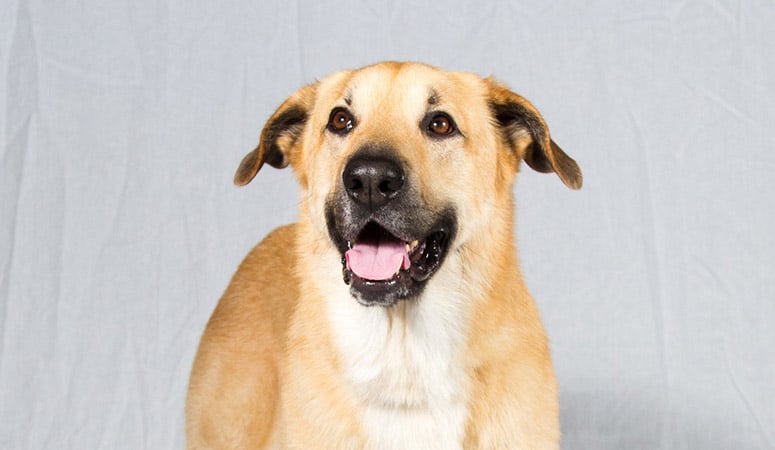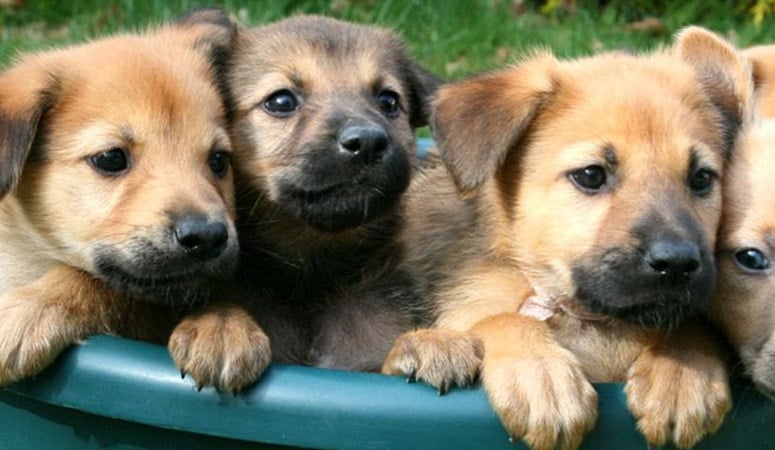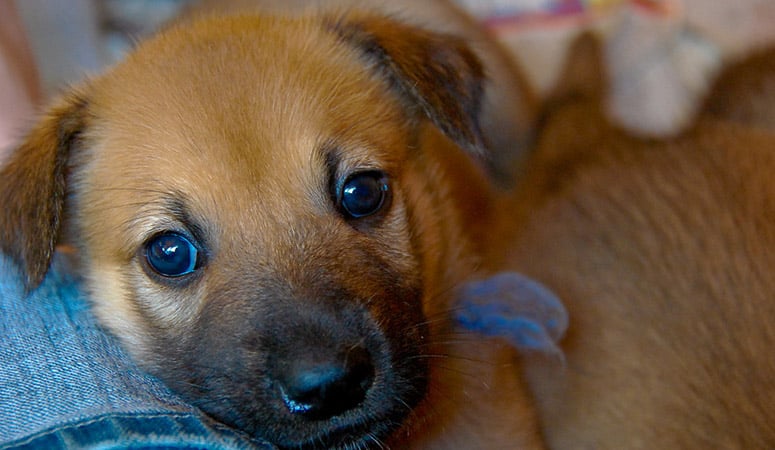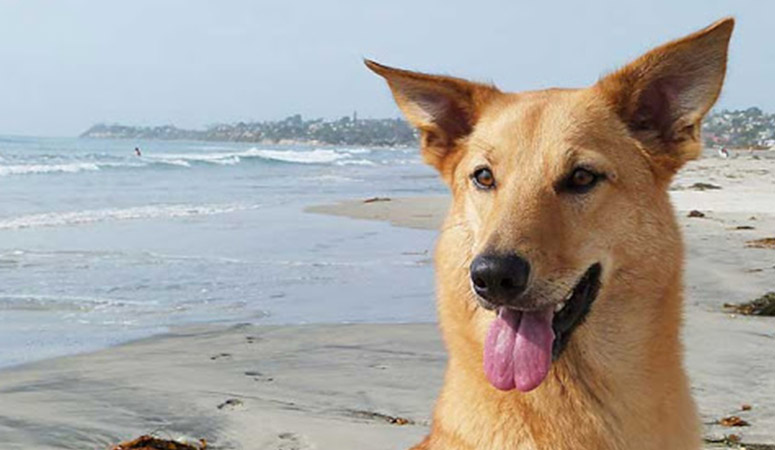Chinook
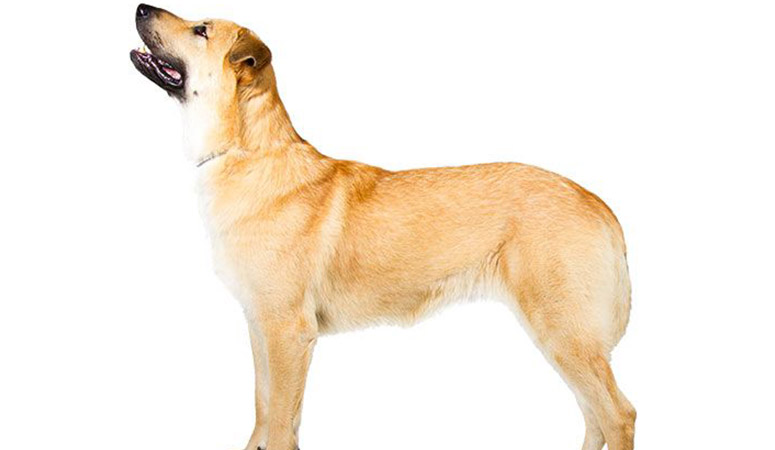
The Chinook is a breed of sled dog, originally bred in the state of New Hampshire during the early 20th century. They have a moderate, athletic build, slightly longer than tall; and they are multipurpose dogs who excel at hiking, mushing, competing in agility and other dog sports, and playing with the kids.
| Other Names | None |
| Color | Black and Tan, Brown, Red |
| Height | Males: 24-26 inches. Females: 22-24 inches. |
| Weight | Males: 55-90 pounds. Females: 50-65 pounds. |
| Life Span | 12-15 years |
| Personality | Smart, Patient, Devoted |
| Exercise | Energetic |
| Origin |
| Popularity | #184 |
| Groom Needs | Weekly |
| Kids Friendly | Yes |
| Dog Friendly | Yes |
| Watch Dog | |
| Family Dog | Yes |
| Litter Size | 3-7 |
Chinook Pictures
Chinook Video
Introduction
Chinooks are very friendly, easily trainable, and highly adaptable dogs. They are playful, loyal, and eager to work. They pack enough muscle tone to support their elegant stride and athletic tendency. Chinooks were originally bred as sled dogs, and they require regular exercise to maintain their hard nature. Their remarkable sense of playfulness with children is a notable feature of this breed. The double coat comes in a variety of colors ranging from light honey to reddish-gold. They can be tawny in color, as well.
Male Chinooks are distinctly masculine, easily distinguishable from the female. A full-grown male stands 24-26 inches from shoulder to paw and weighs somewhere between 50 and 90 pounds. Female Chinooks run smaller than the males, being 22-24 inches (measured at the shoulder). They tip the weighing scale towards 70 pounds. The Chinook is classified as a member of the Working Group by the American Kennel Club (AKC). It has an average lifespan of 11-15 years.
Living with Chinook
The Chinook’s plush double coat is fairly easy to care for, but they shed slightly every day. Weekly brushing is helpful to remove dirt and loose hair and also keep the dog looking his best. During the shedding seasons in the spring and fall, it requires longer, daily brushing sessions. And the Chinook rarely needs more than a bath or two a year. Also, the owner needs to check and clean the dog’s ears on a weekly basis for signs of infection, irritation, or wax buildup. Brush the teeth several times to keep fresh breath and prevent gum disease. Besides, trim the thick, fast-growing nails every week, overly long nails can be painful to the dog and cause problems walking and running.
Chinooks have a tremendous amount of energy, and they thrive on exercise and play, although they often appear relaxed and mellow around the house. They love staying with their humans and won’t be happy living outdoors away from them, they can adapt to most homes as long as their exercise needs are sufficient. Half an hour to an hour of daily exercise is recommended which can be in the form of long walks and opportunities to run in large, safely enclosed areas. Also, they are great companions on long walks, hikes, bicycle rides, and camping trips. As they were bred to pull sleds, it is no surprise that they excel at sports such as shedding, skijoring, bikejoring, and scootering. And they enjoy participating in agility, obedience, rally, tracking, and lure coursing events.
Generally, it is recommended to feed the Chinooks with three to four and a half cups of high-quality dry dog food every day, divided into two meals. And there should be clean and fresh water at all times. More importantly, the food amount should depend on the dog’s weight, size, age, and activity level.
Some dogs are easy to get overweight, so you need to watch their calorie consumption and weight level all the time. Treats may be an important aid in training, but excessive intake can lead to obesity. Also, owners need to distinguish which human food is safe for dogs and which are not. If you have any problems with your dog’s weight or diet, just consult from your veterinarian.
Chinooks are prone to the following health conditions: epilepsy, hip dysplasia, cryptorchidism, vitreous degeneration, cataracts paroxysmal dyskinesia, gastrointestinal disorders, etc.
Major concerns: none
Minor concerns: cryptorchidism, seizures, CHD
Occasionally seen: cataract
Suggested tests:
Hip Evaluation
Ophthalmologist Evaluation
Multidrug Resistance Mutation Test (MDR1)
Total Annual Cost: $3235
Cost is estimated for the first year and may vary depending on many factors, such as dog food, health care, leash, collar, licensing, possible fencing, crates, training and obedience classes, dog-walking, grooming, treats, toys, flea, tick, and heart-worm meds, microchips, etc.
It is recommended to train the intelligent and sensitive Chinook with positive reinforcement techniques. And early socialization and puppy training classes are very important for all dogs and help to ensure that the Chinook grows into a well-adjusted, well-mannered companion. Puppies should be properly socialized to develop the amiable, outgoing personality that is characteristic of the breed. The more ideal is that make the dog work with a trainer to learn how to redirect unwanted behaviors and reward the behaviors you like. Besides, they are good at performance and companion events such as earthdog, barn hunt, obedience, and agility.
History
The Chinook, the official state dog of the U.S state of New Hampshire, was developed in early 1900 (probably 1917) from a cross between a male hybrid, of the Mastiff and St Bernard mix, and a female Greenland Dog. The development of the breed was the work of an expert breeder and explorer by the name of Arthur Treadwell Walden, of New Hampshire. He is credited with the earliest breeding of the Chinook breed, of which his lead dog was named “Chinook”, an American word meaning ‘Warm Wind’. Walden had bred the Chinook with the German Shepherd, Canadian Eskimo Dog, and the Belgian Sheepdog to improve the quality of the breed. Subsequent breeding of the progenies with the original Chinooks served to stabilize the desired traits in the breed.
After Walden’s death, Julia Lombard took the reins as a major breeder of the Chinook. As time passed, other breeders took over in turns until 1963. The population of the Chinook began to decline hastily due to inadequate care and lack of breeders. Efforts by breeders in Ohio, Maine, and California were indispensable to the revival of the dying breed in the 1980s. To date, however, the Chinook still remains a rare breed in many parts of the world. The United Kennel Club (UKC) recognized the Chinook as a distinct breed in 1991, and ten years later it was accepted into the Foundation Stock Service of the American Kennel Club (AKC). It finally gained an AKC recognition in 2013, three years after it joined the Miscellaneous Class.
Helpful Information
Breed Club: CHINOOK CLUB OF AMERICA, INC.
Breed Club Link: http://www.chinookclubofamerica.org/
Breed Club Rescue:
Breed Club Rescue Link: http://www.chinookclubofamerica.org/chinook-adoptions.html

